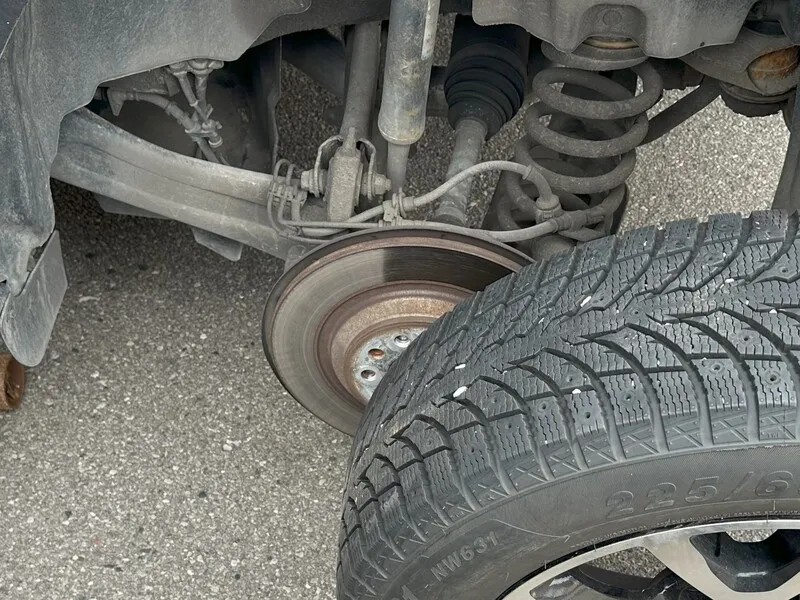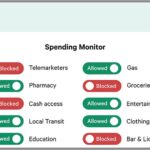When it comes to the safety features of your vehicle, the braking system is undeniably paramount. Within this system, brake pads are workhorses, providing the crucial friction needed to bring your car to a halt. If you’ve ever pondered the question, “How Many Brake Pads On A Car?” you’re not alone. This article will break down the fundamentals of brake pads, their function, and the typical number you’ll find in your vehicle, ensuring you’re well-informed about this vital car component.
 Close-up view of new brake pads, essential car components for safe braking.
Close-up view of new brake pads, essential car components for safe braking.
Understanding the Role of Brake Pads in Your Vehicle
Brake pads are fundamental components of a disc braking system, the standard in modern automobiles. These pads are strategically positioned within the brake caliper, on each side of the brake rotor. Their primary function is to create friction against the rotor when you press the brake pedal. This friction is what slows down the rotation of your wheels, ultimately stopping your car. Without effective brake pads, your ability to control your vehicle safely would be severely compromised.
Decoding the Number: How Many Brake Pads Are on a Standard Car?
The quantity of brake pads in your car is directly related to the type of braking system installed. Most contemporary cars are equipped with disc brakes on all four wheels. This configuration means that typically, a car has eight brake pads, not four as one might initially assume. This is because disc brake systems require two brake pads per wheel – one on the inner side and one on the outer side of the rotor. Therefore, with four wheels and two pads per wheel, the total comes to eight brake pads.
However, it’s worth noting some exceptions. Older vehicles or very small, budget-friendly cars might have disc brakes only on the front wheels and drum brakes on the rear. In such cases, the car would have only four brake pads located in the front, with the rear drum brakes utilizing brake shoes instead of pads. While less common today, this setup existed in older models focusing on cost-effectiveness.
Front vs. Rear Brake Pads: Understanding the Differences
For vehicles with four-wheel disc brakes, although the total count is generally eight pads, there’s a crucial distinction between front and rear brake pads. Front brake pads are typically larger and more robust than rear brake pads. This is because during braking, especially in standard driving conditions, the vehicle’s weight shifts forward due to inertia. Consequently, the front brakes bear a greater portion of the braking force.
Due to this heavier workload, front brake pads tend to wear out more quickly than rear brake pads. They are often made of different friction materials designed to withstand higher temperatures and greater pressure. Rear brake pads, experiencing less intense braking demands, are generally smaller and may be composed of different, less aggressive materials. Understanding this difference is important for maintenance, as you might need to replace front brake pads more frequently than the rear ones.
Recognizing When Your Brake Pads Need Replacement: Key Warning Signs
Knowing when to replace your brake pads is essential for maintaining optimal braking performance and ensuring your safety on the road. Several warning signs indicate that your brake pads are wearing thin and require attention:
- Squealing or Squeaking Noises: Many brake pads are manufactured with a built-in metal indicator that starts to make a squealing noise when the pads reach their wear limit. This is designed as an audible warning to prompt you to check your brakes.
- Grinding Noises: If the squealing sound is ignored, it can progress to a grinding noise. This often indicates that the brake pad friction material is completely worn away, and the metal backing plate is now grinding against the brake rotor. This is a serious issue that can damage your rotors, leading to more costly repairs.
- Reduced Braking Response: If you notice that your car takes longer to stop or the brake pedal feels softer or “spongy,” it could be a sign of worn brake pads or other brake system issues.
- Pulsating Brake Pedal: A pulsating feeling in the brake pedal when braking can sometimes be related to unevenly worn brake pads or warped rotors.
- Visual Inspection: Regularly visually inspect your brake pads. You can often see the thickness of the brake pad material through the wheel spokes. If the material looks thin (less than ¼ inch), it’s time to consider replacement.
Regular vehicle maintenance, including brake inspections, is crucial. Addressing worn brake pads promptly prevents further damage and ensures your braking system remains reliable.
Brake Pad Replacement: DIY or Professional Mechanic?
For car owners with some mechanical aptitude, replacing brake pads can be a manageable DIY project. It generally involves removing the wheel, detaching the brake caliper, removing the old pads, and installing new ones. Numerous online tutorials and resources can guide you through the process.
However, brake work is critical for safety. If you are unsure about any step, lack the necessary tools, or feel uncomfortable working on your brakes, it is always best to consult a certified professional mechanic. A mechanic can ensure the job is done correctly, inspect other brake components for wear and tear, and guarantee the overall safety and effectiveness of your braking system. Improper brake pad installation can lead to brake failure, so when in doubt, professional service is the safest route.
In conclusion, understanding “how many brake pads on a car” and their critical role is part of responsible vehicle ownership. While most modern cars utilize eight brake pads in a four-wheel disc brake system, knowing the signs of wear and ensuring timely replacement is paramount for your safety and the longevity of your vehicle. Whether you choose DIY or professional service, prioritize regular brake maintenance to keep your car stopping reliably.
